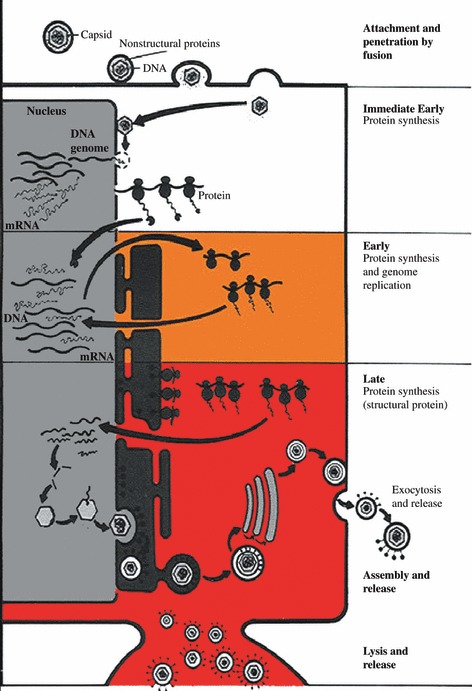Figure 1.

Schematic representation of herpesvirus replication. A herpesvirus virion initiates infection by fusing specific viral glycoproteins on the viral envelope with cellular receptors on the cell surface. After entering the cytoplasm, capsid is transported to the nuclear pore where viral DNA is released into the nucleus. Viral transcription and translation occur in 3 phases; immediate early, early, and late. Immediate early proteins are involved in viral transcriptional regulation and in mobilizing the cellular transcriptional machinery. Early proteins facilitate viral DNA replication. Late proteins are structural proteins of the virus that form empty capsids. Viral DNA is packaged into preformed capsids in the nucleus. Viral glycoproteins and tegument proteins are incorporated into the cellular membrane, and capsids become enveloped to form virions. Virions are transported via the endoplasmic reticulum, and infectious virions can either remain cell associated, spread to uninfected cells via virus‐induced fusion, or can be released from the cell by exocytosis or by cell lysis.
